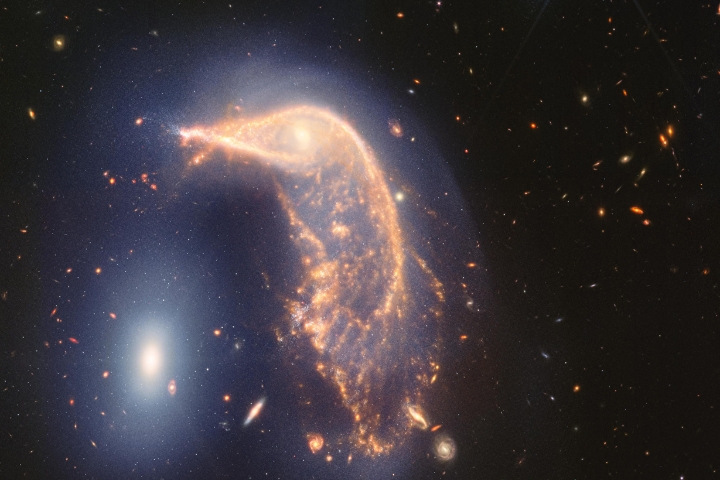In a groundbreaking discovery, the James Webb Space Telescope (JWST) has identified the most distant galaxy known to date, named JADES-GS-z14-0. This galaxy existed a mere 290 million years after the Big Bang, pushing the boundaries of our understanding of cosmic evolution. The findings not only challenge existing theories about galaxy formation but also open new avenues for exploring the early universe and its mysteries.
Unraveling Cosmic Dawn: The Significance of JADES-GS-z14-0
In astronomical research, the discovery of JADES-GS-z14-0 represents a major turning point. This galaxy, which was observed as part of the JWST Advanced Deep Extragalactic Survey (JADES), has a mass of 500 million suns and measures around 1,700 light-years wide. Its high rate of star creation (approximately 20 new stars per year) suggests that it was not just alive but flourishing during the critical era known as Cosmic Dawn. The first galaxies and stars were born during this time, offering vital new information on how matter came together in the early cosmos.
Because of the galaxy’s great distance, light from it has been traveling for roughly 13.5 billion years, giving astronomers a view into an era when the universe was only 2% of what it is now. JADES-GS-z14-0 is one of the earliest galaxies ever discovered, according to the redshift measurement of about 14. This has led scientists to reevaluate cosmic evolution theories that previously underestimated the complexity and luminosity of early galaxies.
Challenges and Future Prospects in Cosmic Exploration
Though JADES-GS-z14-0 is remarkably brilliant and large, it poses problems for current theoretical models. At first, scientists thought it might be an optical illusion brought on by a nearby foreground galaxy. Later observations, however, verified its great distance and distinct characteristics. How a bright galaxy might emerge at such an early stage in cosmic history is one question this anomaly presents.
Astronomers hope to find even more distant galaxies with JWST’s continued exploration of space, which could significantly alter our view of cosmic evolution. Critical information about how galaxies like JADES-GS-z14-0 contribute to our understanding of star formation and galaxy architecture in the early universe is expected to be obtained from the ongoing observations.




GIPHY App Key not set. Please check settings